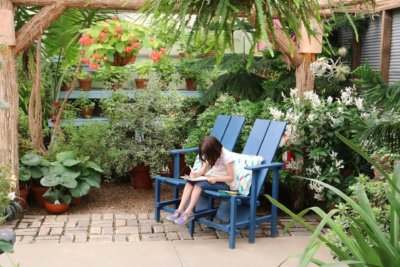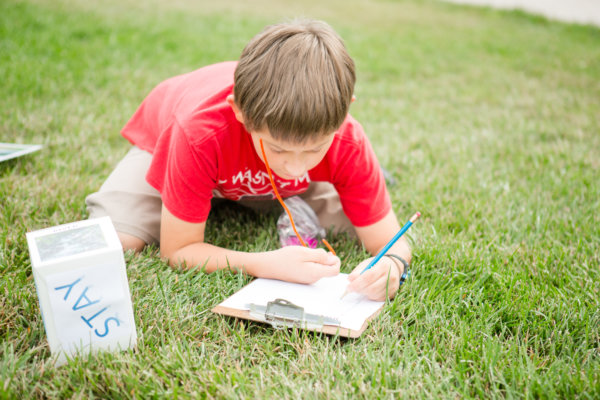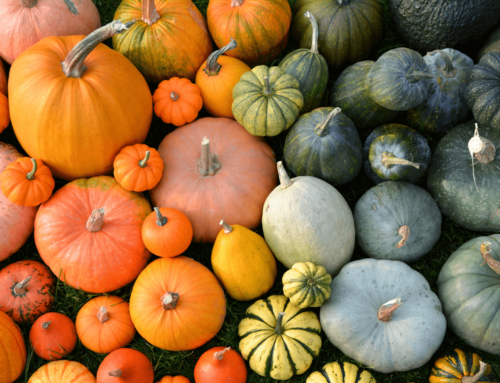Sit Spots: What They Are and How to Use Them
For many parents, getting children to spend time outside with stimulating, educational activities can feel intimidating—not to mention securing the materials, supplies and knowledge needed to teach them about the environment. Luckily, sit spots require little to no equipment or prior nature knowledge, and your child will grow much closer to the environment each time they visit.
What is a Sit Spot?
A sit spot is exactly as it sounds: A place outside to sit, reflect and observe nature. This dedicated place encourages adults and children to be more mindful and immersed in their surroundings. When visiting this spot repeatedly, a child discovers changes over time while building a foundation with nature.
What are the Benefits?

According to the National Center for Biotechnology Information, spending time in nature creates a myriad of cognitive, emotional and physical benefits. Children gain an increased ability to concentrate, improved academic performance, reduced stress and aggression levels, and reduced risk of obesity from regular contact with natural spaces.
Ultimately, positive experiences in nature shape a child’s relationship with the natural world and instill a greater sense of environmental concern.
Choose Your Spot and Settle In
The best sit spot is one that your child feels comfortable in and can visit regularly. This might be a spot in your backyard, a local park, a school yard or a grassy area in your neighborhood. This natural area should spark your child’s interest in some way, whether through trees, flowers, rock features or water.
Once you find a spot, bring a blanket or an old towel and make sure to put away any distractions to focus on the world around you. One way to do this is to start with a few deep breaths. To prompt children to take a deep breath, have them pretend to smell a flower and then blow away a dandelion full of white puffy seeds.
Getting Started
Keep it simple. Depending on the age and comfort level outdoors, a person can sit in their spot for as little as five minutes or as long as an hour. At first, children may have trouble sitting in one place for an extended period, so give your child time for silent contemplation and gradually increase the time spent in their sit spots.
After a few visits, you can bring a nature journal or tools like a magnifying glass to enhance observations.
Five Activities to Practice in Your Sit Spot
Bring this list to your spot to follow along, or download this nature journal for your child to fill out as they observe their surroundings.

- Sensory Checklist: Have children engage each of their senses by asking them: What do you smell, see, hear or feel around you? Do you smell the aroma of a sweet flower blooming nearby or feel the prickly edge of a pinecone on the ground? Add in taste only if it is safe to do so.
- Sound Mapping: In a journal, have your child mark the center of the page with an “X” to represent them in their sit spot. As they listen for sounds around them, have them mark each sound on the page in relation to their position. Can you hear a bird in the tree to your left? Or a bee that flew right by you?
- Wildlife Examination: Sprinkle some bird seed near your sit spot and note how many different birds come to visit. Do these birds change throughout the seasons? Bring a magnifying lens and look for ants beneath the grass. What are they carrying and why? Sit and watch a flower to track which pollinators visit it and how often.
- Color Hunt: How many different colors can you see? Bring a box of crayons or colored pencils with you and see if your child can find something to match each one. How many different shades of green can you find? Why are plants different shades of green?
- Detail Diary: Exercise your child’s ability to notice details such as the shape, color, and texture by having them write down descriptions of an object. Focusing in on a natural object may bring a new awareness of fine details for the first time. Why is this leaf fuzzy and covered in tiny hairs?
Leading by example makes a big impact. So, go out with your kids and find a sit spot to share, or have them pick out one of their very own. Give yourself the opportunity to quiet your mind and focus your senses on nature while encouraging your kids to do the same.



